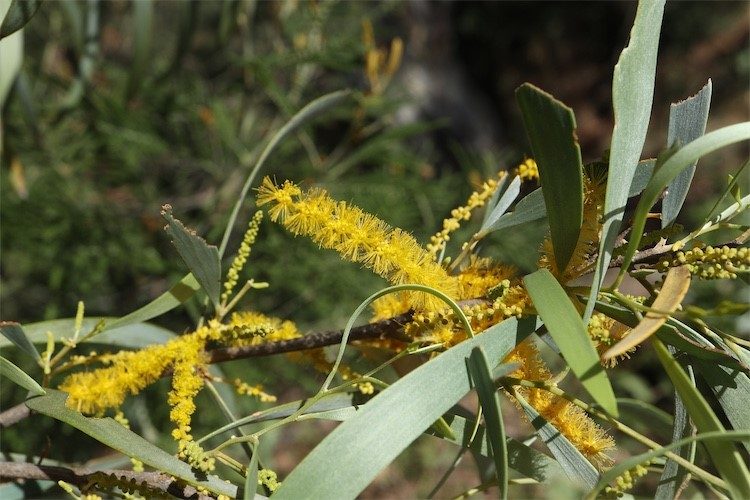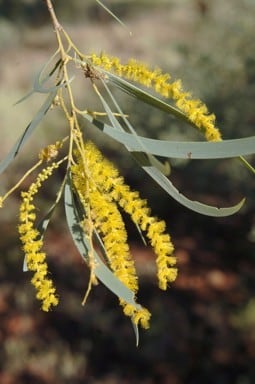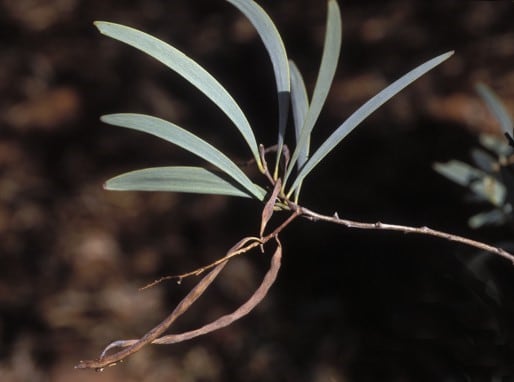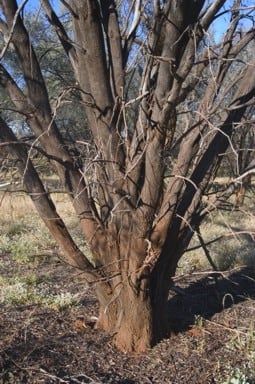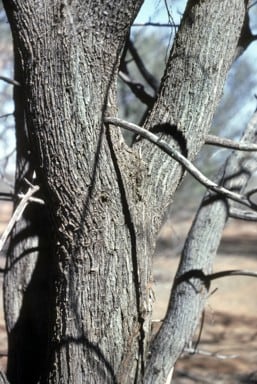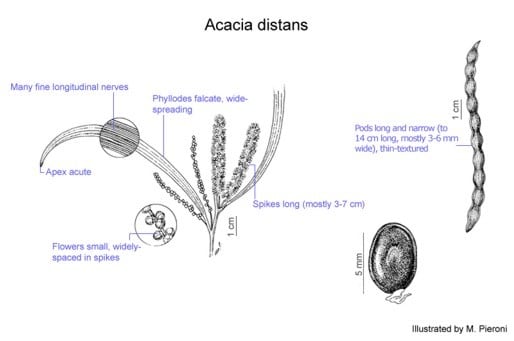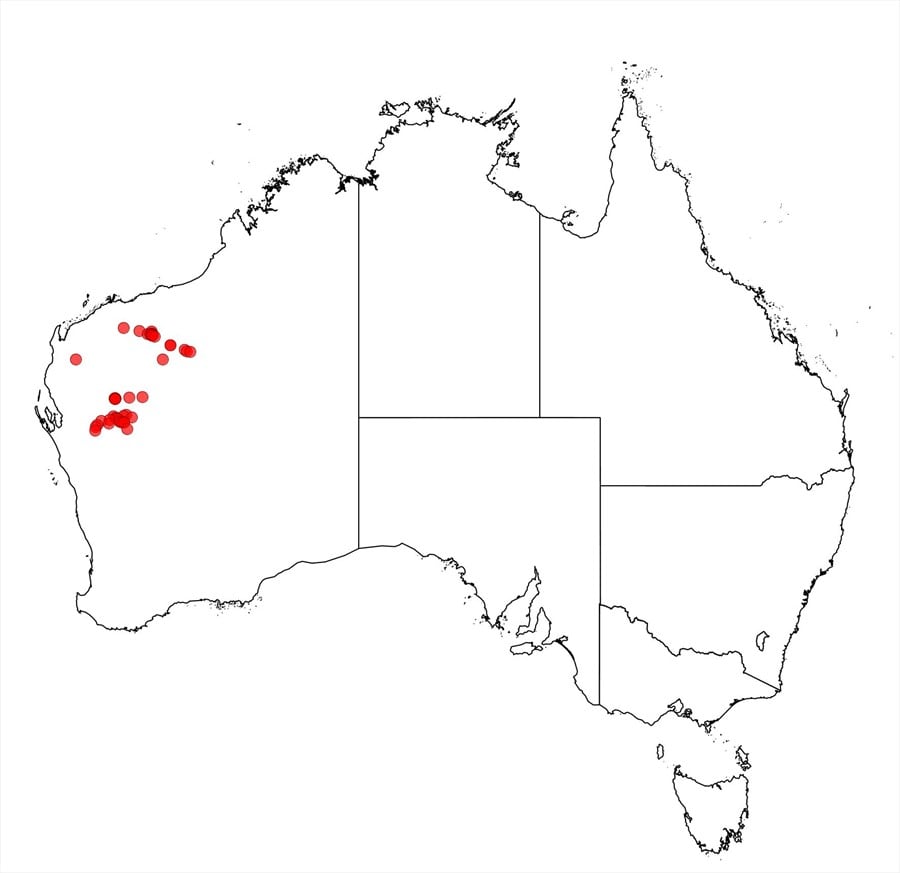Acacia distans Maslin
WATTLE
Acacias of Australia
Family
Fabaceae
Distribution
Discontinuous in north-western W.A. occurring mainly between the Murchison and Ashburton rivers, but also on the Fortescue R. and some tributaries further north.
Description
Shapely tree 4–10 (–12) m tall that often forms pure stands. Bark fibrous, fissured, grey. Branchlets sometimes pendulous, slender, glabrous. New shoots citron-sericeous when young; hairs aging to silver. Phyllodes ±falcate, 6–10 (–15) cm long, 4–11 mm wide, acute, innocuous, thinly coriaceous, silvery grey-blue, silvery grey-green or silvery green, appressed-puberulous (hairs sparse with age), finely striate with central nerve slightly more evident than rest. Inflorescences rudimentary 2-headed racemes with axes 0.5–1 mm long; peduncles (4–) 8–12 mm long, appressed-puberulous, sometimes glabrous when in pod; spikes 3–7 (–11) cm long, cm long, 4–5 mm diam., interrupted; flowers in clusters along receptacle, golden; receptacle appressed-puberulous with indumentum sometimes sparse. Flowers 5-merous; sepals 1/5–1/6 length of petals, cupular, c. 1/2-united; petals sparsely hairy. Pods linear to submoniliform, slightly raised over and shallowly constricted between seeds, to 14 cm long, 3–6 (–7) mm wide, thin-crustose, sparsely appressed-puberulous at maturity. Seeds longitudinal, elliptic to broadly elliptic, 6 mm long, glossy, dark brown, aril small.
Phenology
Flowers late Mar.–May or occasionally June.
Habitat
Grows on loamy, alluvial plains in low woodland and shrubland, often in pure stands.
Specimens
W.A.: Dale paddock, Towera Stn, R.J.Cranfield 1749a (MEL, PERTH); Murchison R., Beringarra, N.H.Speck 656 (BRI, MEL, PERTH); Fortescue R. crossing on new Great Northern Hwy, L.Thomson LXT 1120 (PERTH).
Notes
Acacia distans is probably a moderately fast-growing and long-lived species that is likely to be poorly adapted to acid soils; see J.Doran & J.Turnbull, Australian trees and shrubs: species for land rehabilitation and farm planting in the tropics 145 (1997) for more details.
Perhaps most closely related to A. shirleyi. Similar in general appearance to some species of the Mulga (A. aneura) groupbut readily distinguished by its interrupted spikes and very narrow pods. In the field A. distans may easily be mistaken for A. citrinoviridis which can be distinguished by having shorter spikes with the flowers much closer together on a normally densely yellow-hairy receptacle, and its broader, densely hairy pods.
FOA Reference
Data derived from Flora of Australia Volumes 11A (2001), 11B (2001) and 12 (1998), products of ABRS, ©Commonwealth of Australia
Author
Edited by B.R.Maslin
R.S.Cowan
This identification key and fact sheets are available as a mobile application:
URL: https://apps.lucidcentral.org/wattle/
© Copyright 2018. All rights reserved.



